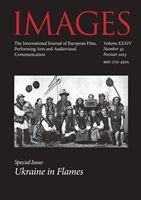Images which are not there. The Representations of the Final Solution in the Examples of Son of Saul and Kornblumenblau
Images which are not there. The Representations of the Final Solution in the Examples of Son of Saul and Kornblumenblau
Author(s): Agata JankowskaSubject(s): Social history, History of the Holocaust, Film / Cinema / Cinematography, Sociology of Art, History of Art
Published by: Uniwersytet Adama Mickiewicza
Keywords: Holocaust; Holocaust studies; visuality; Holocaust movies; cinema; representation; film theory; Kornblumenblau; Son of Saul; bare life;
Summary/Abstract: Since the problem of representing the Holocaust first emerged, philosophers, writers and filmmakers have tried to find appropriate aesthetic methods of expression. Two approaches dominate the thinking about the Shoah: Claude Lanzmann’s claim of “the event without images” and George Didi-Huberman’s “images in spite of all”. The author’s analysis deconstructs these two theoretical approaches through the interpretation of two films: the Polish Kornblumenblau and the Hungarian Son of Saul and the notion of “the images which are not there”, that is, the non-existent photographs of the Nazi “Final Solution”. The main thesis of the essay states that cinematic representation and artistic expression can substitute for the lack of historical and visual (mostly photographic) depictions of the Holocaust. With the inspiration of theory (Giorgio Agamben, Siegfried Kracauer), I consider different methods of dealing with the dilemma of “unimaginable Auschwitz” and the concept of “bare life” as an aesthetical problem.
Journal: Images. The International Journal of European Film, Performing Arts and Audiovisual Communication
- Issue Year: 34/2023
- Issue No: 43
- Page Range: 345-358
- Page Count: 14
- Language: English

